Pros
Cons
Introduction
Product Overview
{{section_header}}{{section.name}}{{/section_header}}
Meet the Sony MDR-Z1000s.
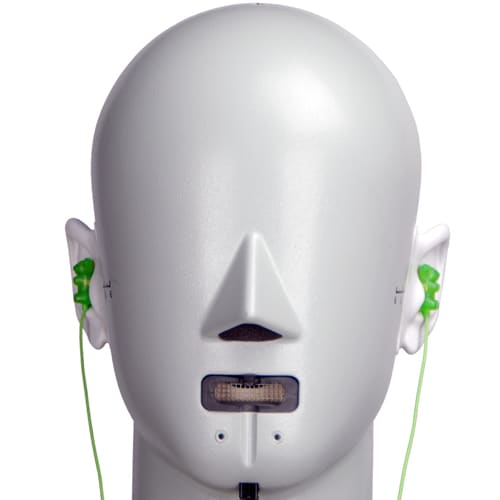
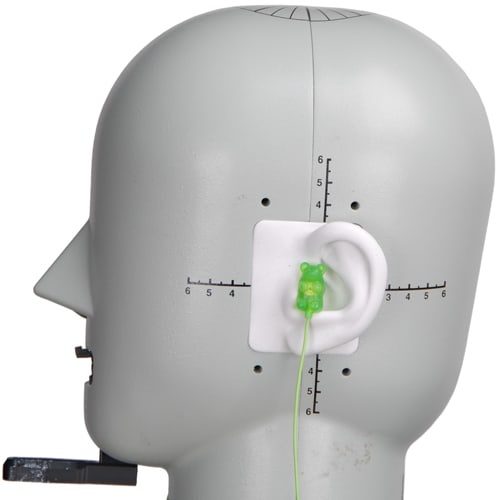
Speakers
{{section_header}}{{section.name}}{{/section_header}}
Behind the removable cup padding and cloth mesh, you'll find the speaker element. You'll notice there isn't a ton of plastic guarding it, but considering the rest of the casing of the {{product.model}}s is extremely robust, this fact should be fine.
Band
{{section_header}}{{section.name}}{{/section_header}}
The band of the {{product.model}}s is metal and hard plastic, covered with a soft leather padding. The ear cups are movable, but not very.
Cable
{{section_header}}{{section.name}}{{/section_header}}
There are actually two cables included with the {{product.model}}. One is a 3.93 foot long affair for use with portable media or a computer, and the other (the one that it comes installed with) is a 9 foot long cable with a straight plug for entertainment centers and what have you.
Due to the fact that each cable has a different jack, we have included a side-by-side shot of each. The L-shaped jack belongs to the 3.93 foot cable, and the straight plug belongs to the 9 foot cable.
Taking a close look at the cord guards, you'll notice vertical striations along the nearest part. Those are grips for a screw apparatus that allows you to detach the cords form the ear cup and swap them out if need be.
Additional Features
{{section_header}}{{section.name}}{{/section_header}}
Included in the satin-lined box is a 1/4th inch cable adapter.
In the Box
{{section_header}}{{section.name}}{{/section_header}}
The {{product.name}}s come packaged with your headphones, 1/4th inch adapter, assorted documentation and an extra cable.
Durability
{{section_header}}{{section.name}}{{/section_header}}
These cans seem to be very durable. Not only are the cups made out of a hard plastic, but the band is mostly made of thick metal. On top of all that, should something happen to your cables, you can simply replace them! For those of you who are looking for longevity out of your investment, this is a very nice feature to have, as cables are usually the first things to break on a set of cans.
Aesthetics
{{section_header}}{{section.name}}{{/section_header}}
They may not have the most intricate design, but the {{product.model}}s are sleek and attractive. They don't bombard your eyes with loads of bright or obnoxious features, and look very clean.
Frequency Response
{{section_header}}{{section.name}}{{/section_header}}
When a company goes out of their way to brand something "studio headphones," you should always take that claim with a grain of salt. While the {{product.model}}s are a decent set of cans, they are by no means studio headphones, and they aren't even close. It's no secret that we don't mind a dynamic response, but the response fielded by the {{product.model}}s are not remotely near what it should be were Sony's claims true.
On the response graph below, you'll see that the bass frequencies are a little overemphasized, but for a good range of frequencies the {{product.model}}s actually remain within our ideal limits. Once the frequencies reach 5-7kHz, however, the {{product.model}}s inexplicably dampen the sound by a large margin, and then at 9kHz they wildly boost volume. Were anyone to try to use these cans in a studio application, they would find that their tracks were mixed with really bizarre levels.

Click here for more information on our frequency response test.
Distortion
{{section_header}}{{section.name}}{{/section_header}}
Here too, there are some issues that should normally be nonexistent in a pair of "studio headphones." For some reason, the {{product.name}} has a 2% level of distortion in the lowest range of frequencies. Listeners accustomed to iPod earbuds will notice an improvement in sound, but those accustomed to high-end over ears may notice this distortion level.
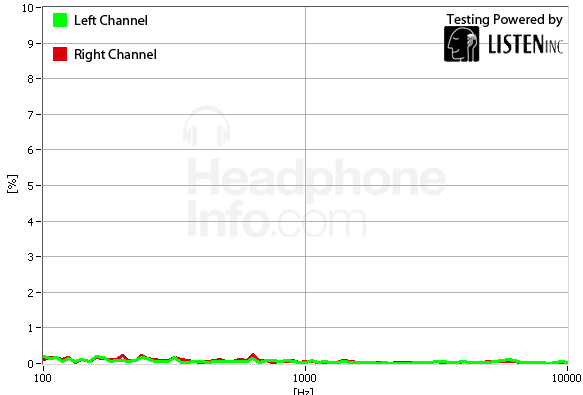
Click here for more information on our frequency response test.
Tracking
{{section_header}}{{section.name}}{{/section_header}}
The {{product.model}}s has a fair tracking performance, but with some minor issues. Namely, they tend to make minor swings back and forth from one channel preference to the other. Though it's not something that you'll probably notice, it's not perfect either.
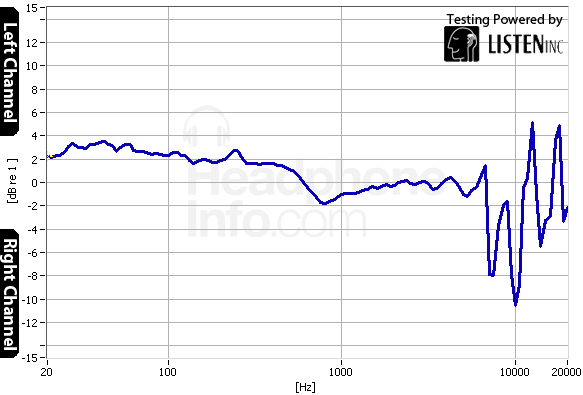
Click here for more information on our frequency response test.
Isolation
{{section_header}}{{section.name}}{{/section_header}}
These cans weren't made for walking. At least, not if you want to prevent hearing loss. While they're good at blocking out a bunch of higher-pitched frequencies, they don't block out any lower-frequency sound, which can be quite annoying in the outside world. At home they should be fine, but before you do take them outside with you, read up on Noise-Induced Hearing Loss first.

Click here for more information on our isolation test.
Leakage
{{section_header}}{{section.name}}{{/section_header}}
Despite the poor isolation score of the {{product.model}}, they actually keep their own sound in fairly well, scoring the maximum possible score on our test.
Click here for more information on our leakage test.
Maximum Usable Volume
{{section_header}}{{section.name}}{{/section_header}}
The {{product.name}}s are able to output sound up to 119.885dB before also outputting 3% distortion. It's nice to know that these cans can go pretty loud without distorting your music, but seriously, don't listen to your music that loud.
Click here for more on our maximum usable volume test
Short-Term Use
{{section_header}}{{section.name}}{{/section_header}}
The {{product.model}}s weren't terribly uncomfortable, but we've had better. For those of you with large pinnae, you may find it a bit difficult to fit the ear cups over your well-endowed ears. Like all headphones, you really should see if you can try these on before you buy them.

Extended Use
{{section_header}}{{section.name}}{{/section_header}}
After 6 hours of constant listening, the initial discomfort didn't go away, but didn't get more annoying either, so it nets the same score.
Customizability
{{section_header}}{{section.name}}{{/section_header}}
There isn't a whole lot that you can do to customize your headphones outside of deciding which cable is right for you, but that's actually a really nice feature to have. You won't have the option of having any fancy faceplates or anything, but really, why would you want to?
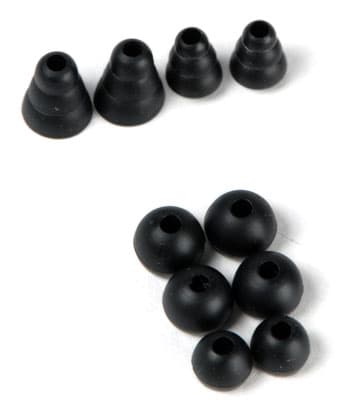
Cable Connectivity
{{section_header}}{{section.name}}{{/section_header}}
As mentioned several times before, there are two separate cables you can attach and detach at a whim with lengths of 3.93 feet and 9 feet respectively. In addition, should you want or need an adapter for a 1/4th inch headphone jack, one has been included in the packaging.
Portability
{{section_header}}{{section.name}}{{/section_header}}
There are no cases or pouches included with the {{product.name}}, so unless you have one of your own, these should probably stay very close to your desk.
Maintenance
{{section_header}}{{section.name}}{{/section_header}}
The {{product.model}}s are actually surprisingly easy to maintain, which is a huge plus given their pricetag. You can remove the ear pads for cleaning, and should any of your cables break you can replace them easily. These headphones get good marks here.
Design
{{section_header}}{{section.name}}{{/section_header}}
Both the Monster Beats Pros and the {{product.name}}s have a very steep price tag for their performance, and very mendacious and misleading marketing surrounding their performance and intended use. Don't expect to buy these to mix tracks or become a music professional, but they are good for your average listening, with certain strengths and drawbacks, of course.
Frequency Response
{{section_header}}{{section.name}}{{/section_header}}
The Monster Beats Pros, despite having a more dynamic response, actually stay within our ideal limits much better than the {{product.name}}s which massively underemphasize a good amount of frequencies, and massively overemphasize other higher-pitched ones.
Distortion
{{section_header}}{{section.name}}{{/section_header}}
The Beats also have less distortion issues than the {{product.model}}s.
Tracking
{{section_header}}{{section.name}}{{/section_header}}
Neither set of over-ears were perfect here.
Isolation
{{section_header}}{{section.name}}{{/section_header}}
Neither set of over-ears isolate well at all, but the {{product.name}}s technically do better.
Comfort
{{section_header}}{{section.name}}{{/section_header}}
We here think that the {{product.model}}s were a bit more comfortable, if only because the Monster Beats Pros can feel like they have a vice-like grip on your skull.
Verdict
{{section_header}}{{section.name}}{{/section_header}}
At this point in their life cycle, we'd probably go with the Beats Pros, as they've come down in price a bit. Neither set of headphones work as advertised, but they are fine for listening to MP3s. Purists will probably elect to look elsewhere to satisfy their listening needs though. These are purely mass-market consumer headphones, despite their marketing.
Design
{{section_header}}{{section.name}}{{/section_header}}
Let's be honest, this comparison is completely unfair by any standard, but we feel it necessary to take bad marketing down a few pegs when we come across it. Here, we compare the {{product.name}} to a pair of cans that are more fit for the job of mixing a track, and certainly more fit to belong in a studio. No headphones are truly going to replace monitors, but if you must have them near your boards, you're going to want headphones that are more like the DT 990 PROs.
Frequency Response
{{section_header}}{{section.name}}{{/section_header}}
As you can see from the chart below, the frequency response of the Beyerdynamics is nice and flat, with very minor fluctuations between emphasis, and no underemphasis beyond frequencies that you probably won't notice if you're over the age of 25. This is the response of a set of cans that belong in a studio. Compare that to the wild shifts in emphasis and underemphasis with the {{product.name}}s and you'll see why these are unfit for the job.
Distortion
{{section_header}}{{section.name}}{{/section_header}}
Where the DT 990 PROs have almost no distortion to speak of, the {{product.model}}s have almost 2% distortion in their already overemphasized bass frequencies. To some audiophiles, this is unacceptable.
Tracking
{{section_header}}{{section.name}}{{/section_header}}
The Beyerdynamic cans didn't have any issues worthy of note in their tracking response (that you would be able to hear, anyway), whereas the {{product.name}}s fluctuated a bit in their response
Isolation
{{section_header}}{{section.name}}{{/section_header}}
Normally we would say that this is a very important comparison for consumer headphones, but if you're using a set of over-ears in a studio, the open soundstage provided by a set of open-backed headphones is widely regarded as preferable to that of a closed-backed set of headphones. The {{product.name}}'s performance here doesn't matter so much in a comparison of studio headphones.
Comfort
{{section_header}}{{section.name}}{{/section_header}}
The DT 990 PROs are far more comfortable to wear than the {{product.model}}s, as they don't constrict, fold or otherwise disturb your outer ear in a painful fashion. Those with smaller pinnae may not have this issue with the {{product.name}}s, but be aware of this setback.
Verdict
{{section_header}}{{section.name}}{{/section_header}}
If you're actually looking for a pair of studio headphones, there is no contest here; the Beyerdynamic DT 990 PROs will satisfy your need for a flat frequency response, negligible distortion and open soundstage for just under 1/3rd the cost of the {{product.name}}s. If you're looking for a pair of headphones to head out into the world with, however, you should be aware that the DT 990 PROs should not go outside, thereby precluding them from service in the outdoors.
Design
{{section_header}}{{section.name}}{{/section_header}}
The Bowers & Wilkins P5-MFIs are a set of on-ear headphones that are not only sexy, but pack a surprisingly good performance for their type of headphone. Let's see how the {{product.name}}s stack up against a pair of on-ears meant to travel. If you're worried about durability, know that the P5-MFIs also have the detachable/replaceable cable, so maintenance is roughly similar between these two.
Frequency Response
{{section_header}}{{section.name}}{{/section_header}}
Right off the bat, we see the {{product.name}}s fall behind a bit. Even though both headphones have a somewhat dynamic response, we see that the Bowers & Wilkins cans maintain a much more reasonable response without any wild shifts in emphasis or underemphasis.
Distortion
{{section_header}}{{section.name}}{{/section_header}}
Both sets of cans have their issues with distortion, but the {{product.name}}'s will be much more noticeable to audiophiles.
Tracking
{{section_header}}{{section.name}}{{/section_header}}
Neither set of cans impress with tracking response, but both seem to stay within reasonable limits here.
Isolation
{{section_header}}{{section.name}}{{/section_header}}
Here is where the {{product.name}}s have an edge on the sleeker on-ear P5-MFIs, as they technically isolate more sound than the Bowers & Wilkins headphones. Also notable (and not pictured) is that the Sonys also corral their sound much better, so they are far less likely to disturb others around you.
Comfort
{{section_header}}{{section.name}}{{/section_header}}
This one is a bit subjective, but in our opinion, we would much prefer the light touch of the P5-MFIs to the odd grasp of the {{product.model}}. Both sets of headphones have their peculiarities in this regard, so try them on before buying if you can, to see what is right for you.
Verdict
{{section_header}}{{section.name}}{{/section_header}}
Considering the steep price tag for the {{product.name}}s, we would be inclined to spring for the Bowers & Wilkins simply for the lower price tag and improved audio performance. Still, there are enough design aspects of each that are subject to opinion when purchasing a set of headphones, so you'll have to take what data we've given you into consideration before buying.
Design
{{section_header}}{{section.name}}{{/section_header}}
We realize that the Sennheiser IE 8is are not very similar to the {{product.name}}s in terms of design, but it's nice to look at other options when discussing what headphones are right for different consumers. They are slightly less expensive than the {{product.name}}s, but they're designed to accommodate the iPhone user with an in-line mic and volume control. For the price you pay, you will get good audio performance, and are a little more durable when it comes to going out on the town, so they definitely merit a second look.
Frequency Response
{{section_header}}{{section.name}}{{/section_header}}
Neither set of headphones are perfect here, but for those who love bass, the IE 8is are probably a better bet. However, while they don't share the {{product.model}}'s issues with underemphasis, they do share their high-frequency overemphasis problems.
Distortion
{{section_header}}{{section.name}}{{/section_header}}
The Sennheiser IE 8is have a negligible amount of distortion in comparison to the {{product.name}}s.
Tracking
{{section_header}}{{section.name}}{{/section_header}}
For a large range of frequencies, the IE 8is have more even tracking. Unfortunately, there is an extremely wild and noticeable swing in the 6kHz range, making the {{product.name}}'s tracking response a little more consistent.
Isolation
{{section_header}}{{section.name}}{{/section_header}}
One of the major advantages of in-ears is that by their design they are usually a bit better at passive noise attenuation than their bigger over and on-ear brothers. However here, the IE 8is only blocked out a little bit more sound. There is no clear advantage here, as neither set of headphones do very well in this regard.
Comfort
{{section_header}}{{section.name}}{{/section_header}}
We typically don't rate in-ears too highly in comfort as you are essentially jamming something into a tiny space where no foreign objects are intended to go. Still, as far as in-ears go, the IE 8is aren't terribly uncomfortable. Overall we prefer most over-ears to in-ear headphones, so we'll give the edge to the {{product.name}} here.
Verdict
{{section_header}}{{section.name}}{{/section_header}}
Depending on your intended use, there's a greater chance that you may want to consider the Sennheiser IE 8is over the {{product.name}}s, as they have less measurable distortion and a bit more functionality if you want to use your headphones outside of your house. If that's not as important to you, and you just want to listen to music at your computer we wouldn't blame you for choosing the {{product.name}}s over the in-ear Sennheisers.
Conclusion
{{section_header}}{{section.name}}{{/section_header}}
Ignoring the price, the {{product.name}}s are a durable set of over-ears that will probably have longevity on their side over other headphones, but you certainly pay for that. It may not be as hard to swallow that high price tag if the {{product.model}}s were able to compete with similarly-priced headphones in terms of sound performance, but they definitely fall short in terms of distortion and strange frequency response.
It stands to reason that no pair of headphones will be perfect for everybody, but these have some significant drawbacks that may make any consumer wonder, especially if they take the marketing surrounding these headphones at face value. We don't mean to continuously put these cans down, as they are pretty nice overall; what we'd like to convey is that they're the victims of deceptive marketing using terms that sound good, but really aren't appropriate.
Meet the tester
A seasoned writer and professional photographer, Chris reviews cameras, headphones, smartphones, laptops, and lenses. Educated in Political Science and Linguistics, Chris can often be found building a robot army, snowboarding, or getting ink.
Checking our work.
Our team is here to help you buy the best stuff and love what you own. Our writers, editors, and experts obsess over the products we cover to make sure you're confident and satisfied. Have a different opinion about something we recommend? Email us and we'll compare notes.
Shoot us an email

